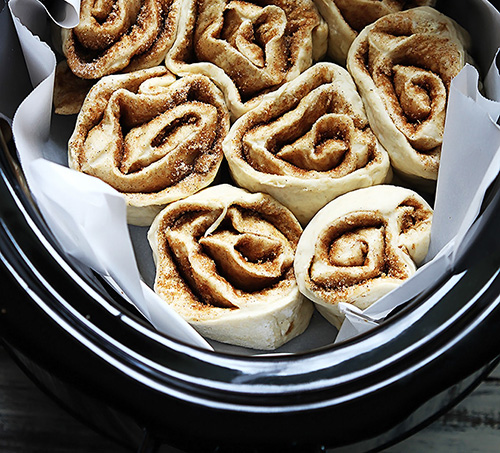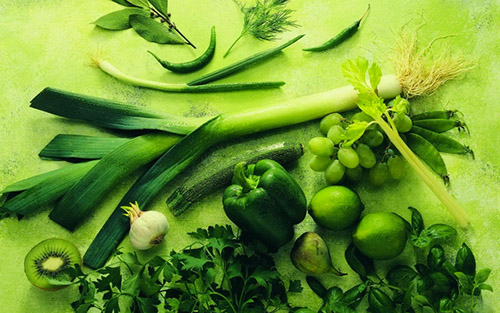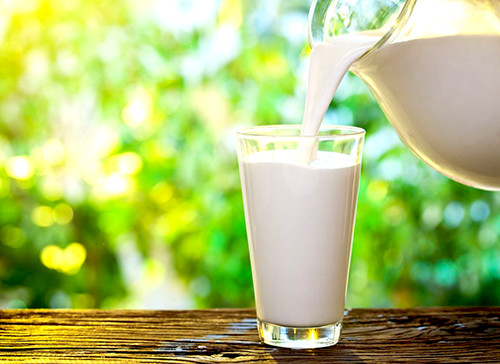Our editors have chased down the Web’s smartest food & drink tips, and tidily summarized them here, for you. Scroll down, and bon appétit!
* * *
29 Foods You Should NEVER Refrigerate

Worried for his texture and flavour, a crimson friend issues an earnest plea.
- Potatoes: Kept too cold, a potato’s starches turn to sugar, releasing a strange flavor. Keep all potatoes and yams in a paper bag in a cool, dark cupboard or drawer.
- Honey: Honey turns to crystallized gunk if it’s kept in the fridge. Store it at room temperature and out of direct sunlight.
- Tomatoes: Left in the fridge, tomatoes become mushy and start losing flavor. Leave them on the counter and use when they have a slight give to the outside skin.
- Apples: Like tomatoes, apples lose flavor and texture in the fridge. Leave them on the counter, and throw them in the fridge 30 minutes prior to eating if you want a crisp bite.
- Onions: The best place for onions is in a paper bag in a cool, dark cabinet or drawer. Stored in the fridge, they soften and lend a pungent scent to nearby foods.
- Coffee: Many think coffee deserves a special place in the fridge or freezer, but it actually is best at room temperature so its natural oils can really flavor your favorite cup of joe. Buy in small batches for really fragrant, and rich, morning coffee.
- Melons: Most melons do best outside the fridge. Once refrigerated, they tend to break down and become mealy. After cutting, if any are remaining, store them in the fridge.
- Ketchup: Ketchup is just fine in your pantry—even after it has been opened. Worry not, the vinegar and preservatives keep it safe.

- Jam: Due to the high amount of preservatives in jams and jellies, they’re fine in the pantry after opening.
- Stone fruits: Peaches, plums and nectarines aren’t friends of the fridge, so leave them on the counter until they’re ripe.
- Pickles: Another item high in preservatives, mainly vinegar, pickles will stay crisp in the pantry. But, if you’re a fan of cold ones, store them in the refrigerator door, which leaves the coldest spots of the fridge for items that really need the space.
- Garlic: Store garlic in a paper bag in a cool, dark spot, and it holds its wonderful flavor for weeks.
- Hot sauce: Make more room in your fridge, and store hot sauce in your pantry — even after it has been opened. All the preservatives and spices keep it safe for topping your eats.
- Most oils: Pretty much all oils are safe to store at room temperature. If the oil has a lower saturated-fat content, such as safflower or sunflower, it will benefit from being kept cool, so store it in a dark cabinet or the fridge door.
- Avocados: Store avocados on the counter and any leftovers in the fridge. But they’ll lose flavor, so it’s a good idea to use a whole one when making the cut.
- Winter squash: Acorn, spaghetti, and butternut do best when stored at room temperature.
- Berries: Fresh berries already have a short shelf life, so leave them out of the fridge and eat them within a day or two of purchasing.
- Spices: Ground spices never need to be refrigerated.
- Soy sauce: Its high salt in soy sauce keeps it safe to store at room temperature.
- Some salad dressings: Just like other condiments, most salad dressing, especially the vinegar- or oil-based, are just fine stored outside the fridge. Those that contain cream, yogurt, or mayonnaise should be stored in the fridge.
- Peanut butter: Peanut butter does just fine in the cool and dark of a cupboard.
- Bread: You might be tempted to store bread in the fridge, but it actually dries out faster. Instead, store it in a cool cupboard or bread box for a fresh slice.

- Bananas: Leave them on the counter. If bananas turn brown before you get to them, toss them in the freezer to make banana bread at a later date.
- Peppers: Red, green, yellow, and even chili peppers are just fine stored in a paper bag in a cool cupboard or drawer.
- Nuts: Nuts are just fine stored in a cool, dark spot.
- Dried fruits: They’re preserved by drying. No need to refrigerate.
- Vacuum-packed tuna: You might not be sure, but that tuna has been sealed, just like in a can, so it’s fine stored at room temperature.
- Herbs: If you pick up fresh herbs from the grocery store, instead of stuffing them back in the suffocating plastic bag, place them in a water-filled glass jar on your kitchen counter, creating an herb bouquet to use while cooking.
- Maple syrup: As with honey, maple syrup crystallizes if stored in the fridge.
[More at Daily Savings]
* * *
The Diet That Eliminates Belly Fat Permanently

- The big fat myth For years doctors and health experts have told North Americans that you are what you eat—eat fat and you’ll be fat. Not so fast, say the Harvard researchers behind a recent study A Harvard study recently published in The Lancet contradicts that advice, at least as far as fat goes. It’s found that low-fat diets are not the most effective way of losing weight—or of keeping it off.
- Want to keep weight off? Skip the carbs. The study followed 56 clinical trials, separating subjects into two groups: those that avoided fats and those that avoided carbohydrates. People who ate low-fat diets for one year lost and kept off an average of 6 lbs; those that followed low-carb diets lost and kept off an average of 8.5 lbs.
- Good fats vs bad fats People are thinking differently about the benefits of daily fats. While saturated and trans fats are still to be avoided, healthy fats like those found in nuts, olive oil, and fish can actually have a protective effect. Higher fat diets are also easier to stick to as well, since they take longer to digest and keep you feeling full.
- Playing the long game In the end, there is very little evidence to support a low-fat diet. Lacking in flavor and quickly digested, such diets tend only to promote the swapping of good fats for bad fats and binge eating. Instead, opt for a low-carb diet and focus on the foods that offer long term health benefits, rather than a quick fix.
[More at Yahoo Health]
* * *
Take the Expiry Date of These 7 Foods SERIOUSLY
Many of the items in your fridge are more than happy in a cupboard or on the counter. Some foods, though, you can never be too careful with. They can pose a serious risk to your health, and must be consumed or discarded by their expiration dates.
- Deli meat: The listeria bacterium exists in many places, but it’s likeliest to contaminate your cold cuts at the processing plant. It’s dangerous because contaminated food looks, smells, and tastes normal; it can multiply in your fridge; and it can kill you. Toss opened deli meat after three to five days in the fridge. If unopened, throw it away after two weeks.
- Eggs: It’s not hard to avoid rotten eggs, which have a potent smell. But how can you tell before you crack it? Easy. Drop it in a bowl of cold water: fresh eggs sink to the bottom, rotten eggs float on top. (As an egg ages, fluid evaporates through the porous shell, while buoying air and gasses seep in.) Science!
- Fresh berries: What likes berries even more than you do? The microscopic mold spores hard at work, turning them into fuzz and mush. Keep fresh berries a maximum of three days in the fridge, and wait until right before you eat them to wash them.
- Mixed greens: Prepackaged salad mixes can harbor dangerous bacteria from process and handling contamination. Unopened lettuce can only last three to five days past its expiry date.
- Raw fish: Fresh fish and shellfish should be eaten within two days of purchase, and kept in the refrigerator. If you plan to freeze it, wrap it tightly and store it in the freezer for up to six months, depending on fat content. Oily fish like salmon and tuna can turn rancid if not stored properly.
- Raw meat: Foul smells and a slimy appearance are the big signals your meat has gone bad. Raw ground meat, including poultry, can be refrigerated for up to two days, according to Canada’s Public Health Agency. Roasts, steaks, and chops can be refrigerated for up to five days, frozen for up to four months.
- Soft cheese: Stored in the refrigerator, opened hard cheeses (like Parmesan and cheddar) will last three and six weeks, while opened soft cheeses (like Camembert and Brie) will last a week.
[More at Bustle]
* * *
Don’t Toss That Sour Milk! (And 8 Other Hacks to Eliminate Food Waste)

You may not want to gulp it down, but there are plenty of uses for gloopy, sour milk.
Throwing away food is a loss that tugs at the wallet and the stomach. For the dedicated foodie, there’s nothing worse. And yet, unless you are willing to live off of processed junk forever, spoiling food makes this a reality. The solution is to get clever about your food storage. Use these 8 ingenious storage hacks to keep your beloved meals and ingredients fresher, longer.
- Add water to your Guac. To prevent your precious guacamole from turning brown before its time, add a thin lukewarm layer of water to the top. The water acts as a barrier from oxygen, and can simply be poured off when you’re ready for round two.
- Store herbs in water. Although dried herbs are workable, fresh herbs can give your recipe an extra kick. Place left over herbs in mason jars filled with water to keep them fresh and your kitchen looking pretty.
- Keep eggs out of the door. Put your eggs in the body of the fridge rather than the door to prevent them from experiencing temperature fluctuations and going bad.
- Store dry food in airtight containers. Dry foods like pasta, cereal, and oats require an airtight seal to prevent oxygen sneaking in and making them stale.
- Freeze leftover sauces in jars. Leaving leftover condiments in the fridge is asking for mold. To avoid this, pour your sauces into jars, screw the lids on tight, and freeze them.
- Keep kale in water. Trim the stems of your kale and place it in a glass container with water to keep it from turning brown. Change the water every few days to keep your veggies healthy and happy.
- Cut stems from root vegetables. Cutting off the stems from vegetables like carrots and beets keeps them fresh by stopping the energy from seeping out of the veggie and into its leafy greens.
- Store cut fruits and veggies in jars. Glass jars truly are the foodies’ answer to everything. Drastically increase the lifespan of your cut fruits and vegetables by putting them in a glass jar with a small piece of paper towel at the bottom to absorb extra moisture.
[More at Bustle]
* * *
5 Power Breakfasts to Kickstart Your Day
To hear some people talk, eating breakfast is one of the most important things you can do to start your day off right. Guess what? We ARE those people—and we’ve got 5 power breakfasts to fill you up without weighing you down.
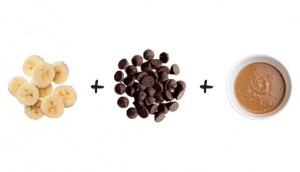 Banana + Chocolate + Nut Butter That’s right, we said chocolate. Whether whipped together or spread onto toast, this winning combo provides protein, fiber, and calcium galore.
Banana + Chocolate + Nut Butter That’s right, we said chocolate. Whether whipped together or spread onto toast, this winning combo provides protein, fiber, and calcium galore.
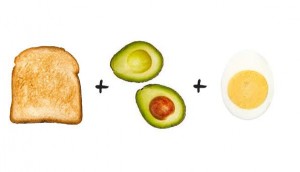 Toast + Avocado + Egg A fan favourite, avo-toast is packed with antioxidants and healthy fats to keep you feeling full longer.
Toast + Avocado + Egg A fan favourite, avo-toast is packed with antioxidants and healthy fats to keep you feeling full longer.
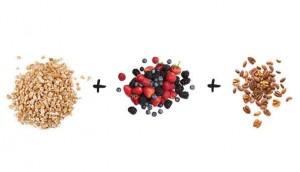
Steel-Cut Oats + Berries + Mixed Nuts Oats are known for powering digestion and lowering cholesterol, while berries and nuts will add some much needed nutrients and proteins to your morning routine.
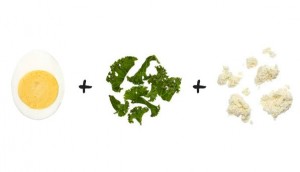 Whole Egg + Kale + Goat Cheese Loaded with fiber, potassium, and vitamins, Kale is the perfect compliment to a morning omelette topped with low fat, delicious goat cheese.
Whole Egg + Kale + Goat Cheese Loaded with fiber, potassium, and vitamins, Kale is the perfect compliment to a morning omelette topped with low fat, delicious goat cheese.
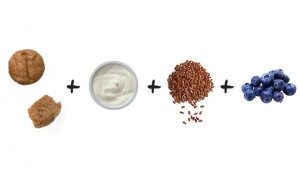 Whole wheat muffin + Yogurt + Flax Seed + Blueberries By mixing together potassium-rich blueberries, flax seeds, and non-fat yogurt, you can create a delicious smoothie bowl loaded with omega-3s, protein, and calcium. Add some fiber on the side to guarantee your satisfaction until lunchtime arrives.
Whole wheat muffin + Yogurt + Flax Seed + Blueberries By mixing together potassium-rich blueberries, flax seeds, and non-fat yogurt, you can create a delicious smoothie bowl loaded with omega-3s, protein, and calcium. Add some fiber on the side to guarantee your satisfaction until lunchtime arrives.
[More at Purewow]
18 Healthy Foods That Can Make You Feel Gross
If you’re so good for me, why do I feel so bad? Good question, comrade. Are you, say, gassy? Tired? Irritable? Bloated? Best take a peek at what’s on your plate—it could be that one of these 18 foods is the culprit.
- Whole grains Turns out the reason whole grains are so good for you can also be their potential flaw: fibre. Fibre is an indigestible carbohydrate and quickly increasing your intake or eating too much at once can cause gas, bloating, and belching. Plus, carbs make you hold on to water, which can contribute to that sudden my-pants-don’t-fit feeling after a meal.
- Almond milk This nut milk is a top choice for those who are lactose intolerant or looking to swap out dairy. But certain brands contain carrageenan, a thickening agent derived from seaweed that has been linked to digestive problems, including inflammatory bowel disease. Make sure you pick one that doesn’t.
- Green tea For some people, the caffeine in green tea can be a sneaky culprit for abdominal distress. If your brew makes you woozy, switch to a non-caffeinated herbal tea like chamomile or peppermint.
- Raw cruciferous vegetables Greens like broccoli, Brussels sprouts, bok choy, and collard greens are packed with nutrients like vitamin C, folate, and fibre. Unfortunately, these veggies contain an indigestible and gas-causing complex sugar called raffinose. The solution? Steaming, to break down the raffinose.
- Beans Starches that can’t be digested in the small intestine end up in the process of bacterial fermentation again in the large intestine. The result? Bean, beans, the musical fruit… Rinse canned beans before using and soak the dry variety overnight in water and baking soda to reduce the starches and help ease the post-dinner toot.
- Sugar-free candy Sugar alcohols (in sweeteners like sorbitol, manitol—anything ending in ‘ol’) are not digestible. They cause bacteria to ferment in the intestine, causing gas, discomfort, and bloating.
- Gum A 2008 German study revealed that the biggest sugarless gum-chewers—16 to 20 pieces a day—risked not only gas and bloating, but also severe diarrhea and unexpected weight loss, all thanks to sorbitol.
- Pressed juice Without the fibre, the sugar in fruit and some vegetables causes your blood sugar to spike and fall. The sudden dip can leave you sleepy and hungry.
- Dried fruit All fruit has naturally occurring sugars called fructose, but when it’s dried, the sugar ends up being concentrated. Dried fruit also has more fibre—that, with the extra sugar, leads to fermentation in the intestine, which can leave you feeling gassy.
- Carbonated water and pop Sodas and seltzers contain carbon dioxide, which can cause burping. The bubbles can also get trapped in intestines and cause gas and bloating.
- Apples With around 4 grams of fibre per serving, apples are one of the most filling fruits you can reach for. But the combination of high fibre and fructose makes this snack a surprising instigator for bloating.
- Nutrition bars Many bars are packed with inulin (also known as chicory root fibre), a plant-based carbohydrate which makes them extra filling. The downside is that inulin doesn’t have the texture or taste of fibre, so it’s easy to graze on too much
- Corn Corn contains cellulose, a fibre our bodies can’t properly break down. If you don’t chew it long enough it may pass through undigested and cause stomach upset.
- Instant oatmeal Many brands are low in fibre and high in sugar, causing your blood sugar to skyrocket and then plummet, says Kirkpatrick. Instead of fueling you up in the morning, you’re left feeling tired.
- Soy sauce Soy is high in sodium—one tablespoon has around 1,000 milligrams—which can lead to water retention and some major midsection puff.
- Red meat Red meat is high in fat, so it sits in in your stomach longer than protein and carbs do. That’s why many people feel like they have a brick in their abdomen after eating it.
- Pretzels The salt makes you bloated. Most pretzels are made of stripped down wheat, making them a refined carb. You’ll experience a sugar high, then low, which, at that point you’ll be tired and looking for your next carb fix.
- Bagels Any refined white flour product is metabolized like sugar in the body. Your body will process it really quickly, leading to an energy crash, explains Cavuto. Not only will you feel hungry after, but chances are you’ll actually be tired, too.
[More at Yahoo Health]
* * *
6 Surprising Foods That Help You Sleep All Night Long
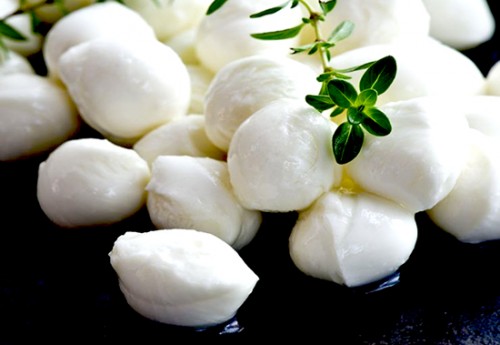
Everyone has experienced the warm drowsiness that comes after a turkey feast. The lassitude is caused by the amino acid L-tryptophan, which produces melatonin and serotonin—both ushers of seamless sleep. Turkey, though, is far from the only food rich in this amino acid. Here are six surprising sources of L-tryptophan—foods that definitely help you sleep all night long.
- Toasted Sesame Seed Bread Sesame seeds contain extremely high levels of L-tryptophan, while the carbohydrates in the bread cause your body to produce insulin, creating a chemical triple knockout that’s sure to put you to sleep.
- Raw Nuts Raw nuts, especially almonds, pistachios, and cashews, are saturated in L-tryptophan and magnesium, which helps calm muscles and nerves for a relaxed rest.
- Fresh Fish Filled with plenty of L-tryptophan and Omega-3s, fish discourage intermittent waking and can add as much as a full hour to your nightly sleep.
- Cow’s Milk Packed with magnesium, calcium, and serotonin producing L-tryptophan, cow’s milk can have a relaxing effect that justifies the age old tradition of milk before bed.
- Mozzarella Cheese Whoever said cheese before bed causes nightmares has never eaten mozzarella. Loaded with L-tryptophan, Mozzarella is guaranteed to leave you drowsy and content.
- Cherries Unlike the other foods on this list, cherries are able to produce melatonin without producing tryptophan first, making them the ideal pre-bedtime snack.
More at [London Drugs]
* * *
11 Slow-Cooker Breakfasts That Will Set Your Mouth Watering
“Set it and forget it” doesn’t just apply to dinner. Get any of these delectable recipes started before bedtime, and your morning will be relaxed, delightful, and delicious.
- Delectable Cinnamon Rolls Fluffy straight from the crock pot, topped with rich cream cheese frosting (recipe)
- Slow-Cooker Yogurt: Who needs a yogurt-maker when you have a slow cooker? So easy, a child can make it. (recipe)
- Coconut Steel Cut Oats with Fresh Fruit A tropical makeover with coconut milk, coconut flakes, pumpkin seeds, raisins, and chia (recipe)
- Slow-Cooker Breakfast Casserole Luscious layers of hash browns, bacon, cheese and gently cooked eggs (recipe)
- Mexican Breakfast Casserole with Chorizo Delightful, topped with chunky salsa and sliced avocado (recipe)
- Honey Nut Granola, with Cherries and Pumpkin Seeds: An adaptable autumn combo (recipe)
- Banana Allspice Breakfast Risotto: A creative, gluten-free spin on rice pudding (recipe)
- Blueberry Lemon Poppyseed French Toast Casserole: A barely sweet, hands off approach to French toast (recipe)
- Slow-Cooker Cinnamon Monkey Bread: A decadent breakfast treat (recipe)
- Bacon, Sage, and Butternut Squash Quiche: Sage gives the dish an appealing autumnal flavor (recipe)
- Pumpkin Streusel Coffee Cake: Rolled oats make the streusel topping extra crispy (recipe)
[More at London Drugs]
* * *
7 Green Superfoods You Absolutely Should Be Eating
- Avocados Generally considered a treat in our society, the avocado has 690 mg of potassium and a slew of healthy fats that help lower cholesterol and decrease inflammation.
- Apples An apple a day may actually keep the doctor away—by helping to reduce obesity, high cholesterol, risks of stroke, and certain types of cancer. (This applies to yellow and red apples, too, don’t worry!)
- Kale Each cup of kale offers 24 mg of calcium to help strengthen bones. It’s also rich in vitamin A, which keeps skin healthy and certain forms of cancer at bay.
- Spinach Like its cousin, kale, spinach is high in vitamin A and C, and offers slightly more fiber to boot.
- Nopales A cactus plant more common south of the border, nopales is loaded with vitamin A, C, and fiber. Studies have proven that this green can lower high blood sugar as well, making it ideal for with diabetes or bad eating habits.
- Brussels sprouts A favourite of parents, Brussels sprouts offer plenty of vitamin A and C, as well as 4 grams of fiber per cup. With plenty of recipes available to spice them up, this is one vegetable that you should definitely try again.
- Pistachios Technically a nut, the little green pistachio packs a big health punch. A healthy source of fiber, just half a cup of pistachios provides more than 6 grams of protein, well over 10 percent of the daily recommendation.
[More at Real Simple]
* * *
7 Smoothie Ingredients Nutritionists Love

We asked nutritionists for their go-to, satisfying smoothie picks—and how to use them.
- Fresh Sweet Cherries contain vitamin C, as well as the nutrients anthocyanins, a compound linked with fighting inflammation. That means sipping a cherry smoothie after a workout will help your body heal.
- Wild blueberries have more fiber and antioxidants than their cultivated cousins, and they’re an excellent source of manganese, a mineral important to bone health. Wild blueberries have a more intense flavor than their larger, domesticated cousins. (Look for true wild blueberries—grown in Canada—in your freezer section.)
- Ginger both calms the stomach and adds a nice zing to your smoothie. Studies have shown that ginger helps decrease muscle soreness after exercise, inflammation, and osteoarthritis pain.
- Almonds provide a combination of healthy fat, fiber, protein and nutrition. The protein helps keep your energy constant throughout the day.
- Carrots are a wonderful source of fiber and vitamin A. Vitamin A is important for healthy skin and eyes, as well as the immune system. A great smoothie add-in for someone who doesn’t like their drink too sweet.
[More at Real Simple]
* * *
Why Does Organic Milk Lasts So Much Longer?
[More at Thrillist]
* * *



